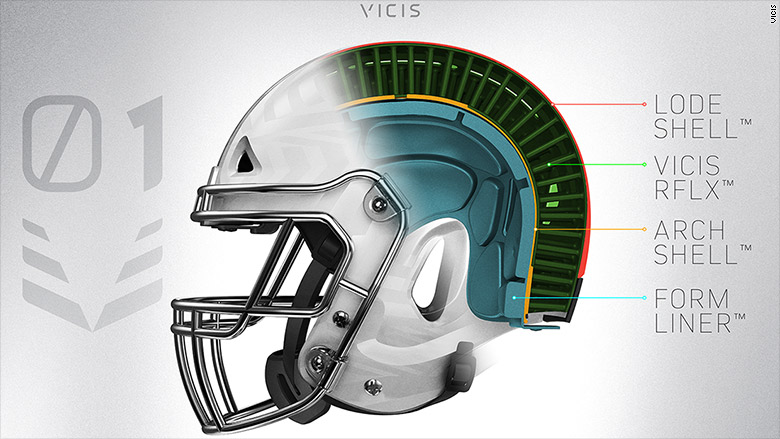
Discussion of the VICIS ZERO1 football helmet is nothing new, especially in this column. The company itself has been around since 2011, and the helmet has been tested by two different college football teams, the University of Washington Huskies and the University of Oregon Ducks. It was also scheduled to be part of the National Football League’s helmet testing this winter.
Before the NFL testing, however, VICIS pulled its helmets from the Washington and Oregon locker rooms. Occurring in August, this hiccup shows that much of startup innovation, especially in the sports tech industry, is about being able to adapt. VICIS and its partners went outside of the lab and learned some valuable lessons about the ZERO1.
Bumps in the Road
According to VICIS co-founder Dave Marver’s December 8, 2016, post on the company’s development blog, all players on both rosters at Washington and Oregon were given ZERO1s. The helmet itself is made from four distinct layers: the lode shell, VICIS RFLX, the arch shell, and the form liner.
The lode shell, the outermost layer, is designed, according to the company, to crumple on impact like the body work of a vehicle. The RFLX layer absorbs the impact. The other layers combine to help protect a player’s head from the effects of concussion.
In August of 2016, players from both Washington’s and Oregon’s programs complained of more than one comfort issue. Some reported ongoing forehead pressure, while others saw a higher-than-usual incidence of the upper chinstrap disengaging during practice.
Luckily for VICIS and the players, the bumps in the testing road were limited to these two major issues. According to Marver, there have been no issues with the safety aspects of the helmet.
New Testing
After pulling the helmets from Washington and Oregon, the company worked to fix the forehead pressure and chinstrap issues. Pointing the to the increasing cost of school athletics at every level, VICIS scrapped all 450 helmets. Each one costs $1500.
Now that the helmet has been refined, VICIS has a new testing partner: the University of Alabama at Birmingham (UAB). VICIS is teaming up with UAB’s football team for spring testing. This is also a partnership with UAB’s well-known engineering department, including professor Dean Sicking.
Sicking is responsible for helping develop safer walls for both auto racing and national highways. His experience in impact safety could be highly valuable to the team at VICIS.
More Competition
VICIS will need to continue not only its testing, with UAB and other partners, but its highly innovative practices. Major competition could be on the horizon, and from VICIS’s home state itself.
Microsoft co-founded Bill Gates recently announced his own partnership with Intellectual Ventures. The Bellevue-based patent holding company employs several inventors who are among the 21 applicants, including Gates, listed on a recent patent filing.
The filing is for a sensor-filled helmet that is supposed to detect concussion-causing impacts. The sensors could, according to the patent, send data to coaches and team healthcare professionals in real-time during practices and competition. The data would help predict when a player is at-risk of getting a concussion. It would also help in the maintenance of the helmets, indicating when the gear needed inspection, repair, or replacement.
This type of concussion protecting innovation is part of the larger blanket of healthcare entrepreneurship, which has been impacted by healthcare reform. Concussion is defined as a medical condition, and since 2014, the National Collegiate Athletic Association has partnered with the Department of Defense to fund a clinical study of concussion. The study, an effect of these reforms, will also help companies like VICIS continue to innovate and adapt their products to keep players safe. The results of VICIS’s newest testing partnerships are sure to be intriguing as well as fruitful.

